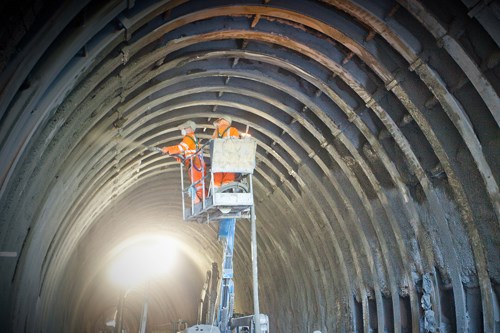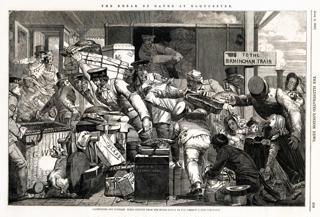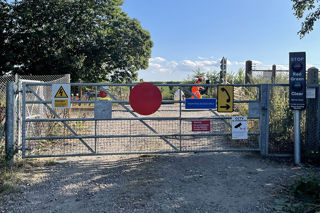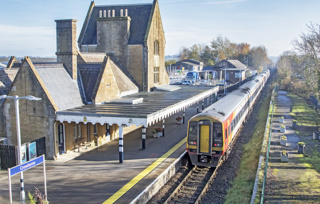Age catches up with all of us, the railway included. Inevitably, across the country, parts of the network start to show signs of wear and tear because of the ravages of time.
One such 160-year-old had become severely distorted because of land movements. Strengthening work in the 1980s and 1990s, using steel ribs, had merely staved off the inevitable, and distortion and deterioration had continued to set in.
A long-standing 20mph speed restriction had been imposed through the 250-metre Holme Tunnel, on the East Lancashire line between Burnley Manchester Road and Todmorden. But a major reconstruction programme by AMCO and Network Rail has secured the tunnel’s future, and in the process it won Civil Engineering Achievement of the Year at RAIL’s 2014 National Rail Awards.
Dating back to 1849, Holme Tunnel was designed by John Hawkshaw, an engineer for the Lancashire and Yorkshire Railway. It was dug by hundreds of navvies, blasting and shovelling through 242 metres of sandstones, mudstones and five coal seams. And all of it under an unstable hill called Thievely Scout.
It was an important route for oil tanker trains, but when they stopped using the Copy Pit line in 1982, closure of the route looked likely. But it was saved by commuter trains sponsored by the Burnley and Bradford Permanent Building Societies in 1984, and now enables Northern Rail to offer 40-minute journeys from Burnley to Manchester Victoria.
However, the tunnel had been deteriorating for the past 40 years, because of the movement in the surrounding ground. This was most keenly seen at the Todmorden Portal, where the haunches had moved inwards by up to 320mm and the crown upwards by 180mm. The 20mph speed restriction could not continue indefinitely, and the deterioration would only continue.
NR engaged AMCO to develop a solution to the problem, setting out the following aims:
- Reinstate the tunnel’s structural integrity
- Allow the return of a normal asset management regime
- Provide W8 gauge width standard clearances
- Restore the original 45mph line speed
It would not be a simple challenge, and AMCO was tasked with a programme of works that included: reconstruction of a 90m section of tunnel at the Todmorden end; reconstruction of the Todmorden portal; repairs to the tunnel lining at the Burnley end; installing a new drainage system; and permanent way renewal throughout the tunnel, extending 200m at either end.
It was agreed that the most efficient way (and least disruptive in the long term) was to use a total blockade of the route. And so a 20-week blockade was planned for between November 2013 and March 2014.
But before the blockade could begin, extensive preparatory work was required. The main part of this began in May 2013, to stabilise the ground surrounding the tunnel. AMCO drilled through the existing tunnel lining in order to inject 650,000 litres of cementitious grout into the ground. Injected at high pressure, this strengthened and stabilised the ground and surrounding rock, so that the old tunnel lining could be removed during the main blockade works.
With the blockade in place, the work began in earnest. The old tunnel lining was broken out in 1.5m sections, using a technique borrowed from the mining industry known as a ‘back rip’. This minimised the amount of ground exposed at any given time, and significantly reduced the likelihood and severity of any falling rock. To further improve safety, a temporary protection mesh was put in place.
Once the old lining was removed, new pre-cast concrete invert units could be installed, followed by 305mm x 305mm steel reinforcing ribs that each weigh around 41⁄2 tonnes. The ribs were built inside the tunnel from three sections, and lifted into position as a single unit by specialist equipment that AMCO designed specifically for the project. Each rib was then bolted into place.
As the removal and replacement of ribs progressed, a team worked from behind to apply a new fibre-reinforced concrete lining to the tunnel. A 420mm-thick layer of concrete was spray applied. But this is not just standard concrete, it contains additives that give it strength, flexibility and workability, as well as a chemical that retards curing to allow the concrete to be transported into the tunnel and pumped into position before beginning to set.
While the main reconstruction was progressing at the Todmorden end of the tunnel, teams were also making repairs at the Burnley end.
Bricklayers and stonemasons were on site 24 hours a day, repairing the old lining. In some areas, this meant reusing stone recovered from work at the other end of the tunnel to replace the damaged stone. Grouting work at the Burnley end will prevent future water ingress.
The main repair and reconstruction work was completed by early March 2014. The site was then handed over to Stobart Rail, which reinstated the track infrastructure. By March 24, the line re-opened to service traffic as planned.
With any major engineering work, there is a high level of risk involved. What is perhaps most impressive about the work at Holme Tunnel is that there were no workforce accidents.
At the project’s peak during the blockade, 110 staff were on site every day over two shifts, working in a hostile underground environment. But they all remained safe. It is testament to the skills and expertise of NR and the engineering, mining and tunnelling experience of AMCO that this was possible.
And the project wasn’t just delivered on time and on budget, without compromising any aspect of the work, it also saved more than £1 million from the original budget, coming it at around £11.5m.
The benefits for the railway long-term are huge. Not only has the line speed been increased from 20mph to 45mph, the blockade during the project allowed for a whole suite of additional works to be carried out on a further ten miles of the route.
None of that would have been possible without the collaborative teamwork between NR and AMCO. And nothing really sums up that achievement better than a comment from one of the Office of Rail Regulation inspectors:
“If we could bottle what’s happening here, I’d be out of a job.”
- This feature was published in RAIL 763 on 10 December 2014


















Login to comment
Comments
No comments have been made yet.